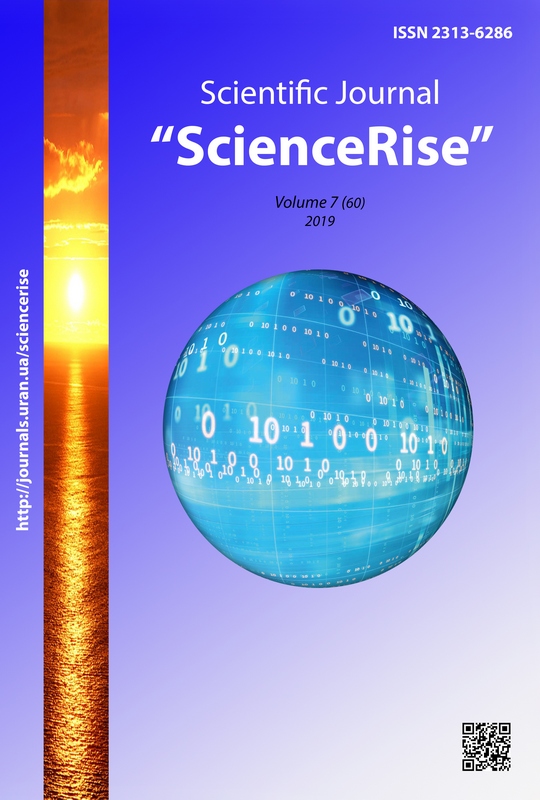Розробка алгоритму перерозподілу земельних ділянок при консолідації земель в Україні
DOI:
https://doi.org/10.15587/2313-8416.2019.173418Ключові слова:
перерозподіл земель, консолідація земель, обмін земель, рівноцінні земельні ділянки, оптимізаційна модельАнотація
У роботі розглядається питання оптимізації перерозподілу земельних ділянок при консолідації земель в Україні. Встановлено місце і роль перерозподілу земельних ділянок у складі заходів щодо консолідації земель. Проаналізовано основні алгоритми перерозподілу, які використовуються для цілей консолідації земель у вітчизняній та закордонній практиці. Запропоновано алгоритм перерозподілу земельних ділянок при консолідації земель в Україні, який базується на рівноцінному обміні земельними ділянками. Алгоритм апробовано при проведенні консолідації земель на території Київської області
Посилання
Malashevskyi, M. A., Bugaіenko, O. A. (2011). Perspektyvy konsolidatsii zemel silskohospodarskoho pryznachennia v Ukraini. Mistobuduvannia ta terytorialne planuvannia, 42, 216–219.
Malashevskyi, M., Bugaienko, O. (2016). The substantiation of urban habitats peer land exchange in Ukraine. Geodesy and Cartography, 42 (2), 53–57. doi: http://doi.org/10.3846/20296991.2016.1198568
FAO (2003). The design of land consolidation pilot projects in Central and Eastern Europe. FAO Land Tenure Studies no. 6. Rome. Available at: http://www.fao.org/3/a-Y4954E.pdf Last accessed: 09.07.2019
FAO (2007). Operations manual for land consolidation pilot projects in Central and Eastern Europe. FAO Land Tenure Manuals. Available at: http://www.fao.org/nr/lten/abst/lten_071001_en.htm Last accessed: 01.10.2018
Shvorak, A., Yevsiukov, T. (2014). Sposoby ta metody konsolidatsii zemel silskohospodarskoho pryznachennia. Ekonomist, 8, 44–48.
Shvorak, A. M., Bilianovska, O. I., Tkachuk, L. V. (2009). Evropeiski tendentsii konsolidatsii zemel. Zemleustrii i kadastr, 3, 8–17.
Dorosh, Y. M. (2011). Pro osnovni problemy ta napriamy ratsionalizatsii zemlekorystuvannia na suchasnomu etapi zemelnoi reformy. Efektyvna ekonomika, 10. Available at: http://nbuv.gov.ua/UJRN/efek_2011_10_38 Last accessed: 09.07.2019
Martyn, A., Krasnolutskyi, O. Konsolidatsiia zemel silskohospodarskoho pryznachennia v Ukraini: mekhanizmy zdiisnennia. Available at: https://zsu.org.ua/andrij-martin/92-2011-06-14-08-46-34 Last accessed: 09.07.2019
Volkov, S. N. (2001). Zemleustroystvo. Ekonomiko-matematicheskie metodyi i modeli. Vol. 4. Moscow: Kolos, 697.
Thomas, J. (2006). Attempt on Systematization of Land Consolidation Approaches in Europe. Zeitschrift für Geodäsie, Geoinformation und Landmanagemen, 131 (3), 156–161.
Demetriou, D. (2012). Land consolidation in Cyprus: Why is an integrated planning and decision support system required? Land Use Policy, 29 (1), 131–142. doi: http://doi.org/10.1016/j.landusepol.2011.05.012
Seele, W. (1992). Bodenordnerische Probleme in den neuen Ländern. Vermessungswesen und Raumordnung, 54, 73.
Lemmen, C., Jansen, L. J. M., Rosman, F. (2012). Informational and computational approaches to Land Consolidation. Available at: https://www.researchgate.net/publication/257313849_Informational_and_computational_approaches_to_land_consolidation Last accessed: 09.07.2019
Yimer, F. A. (2014). Fit-for-purpose Land Consolidation: An Innovative Tool for Re-allotment in Rural Ethiopia. Available at: http://land.igad.int/index.php/documents-1/improving-land-governance/capacity-development-tools/1530-fit-for-purpose-land-consolidation-an-innovative-tool-for-re-allotment-in-rural-ethiopia/file Last accessed: 09.07.2019
Fernández, C. Z. (2009). Land Consolidation in Galicia. Available at: http://www.fao.org/fileadmin/user_upload/reu/europe/documents/LANDNET/2009/1-8.pdf Last accessed: 09.07.19
Malashevskyi, N. A., Mosiichuk, Yu. A., Bugaіenko, O. A. (2014). Doslidzhennia vitchyznianoho dosvidu obminu zemel silskohospodarskoho pryznachennia. Inzhenerna heodeziia, 61, 85–94.
Hupfeld, W. (1971). Ein Beispiel zur mathematischen Planungsrechnung. Zeitschrift fӥr Vermessungswesen, 2, 61–65.
Tenkanen, J. (1987). Computer-aided allocation of plots in land consolidation. Jornal of Surveing Scince Finland, 2, 10–25.
Kik, R. (1971). Een methode voor het vervaardigen van een voorlopig toedelingsplan voor een ruilverkaveling. Nederlands Geodetisch Tijdschrift, 207–215.
Ayranci, Y. (2007). Re-allocation Aspects in Land Consolidation: A new Model and its Application. Journal of Agronomy, 6, 270–277. doi: http://doi.org/10.3923/ja.2007.270.277
De Vos, W. (1982). Allocation in land consolidation projects in Netherlands with the aid of an automated system. Surveying and Mapping, 42, 339–345.
Lemmen, C., Sonnenberg, J. A model for allocation and adjustment of lots in land consolidation. New development in Netherlands. Proceedings of Federation Internationale des Geometres XVIII International Congress.
Malashevskyi, M., Palamar, A., Malanchuk, M., Bugaienko, O., Tarnopolsky, E. (2018). The opportunities for use the peer land exchange during land management in Ukraine. Geodesy and Cartography, 44 (4), 129–133. doi: http://doi.org/10.3846/gac.2018.5405
Bugaіenko, O. (2018). The land reallocation model in the course of agricultural land consolidation in Ukraine. Geodesy and Cartography, 44 (3), 106–112. doi: http://doi.org/10.3846/gac.2018.2049
Malashevskyi, M. A., Bugaіenko, O. A. (2016). Obgruntuvannia pokaznykiv konfihuratsii zemelnykh dilianok pid chas provedennia rivnotsinnoho obminu. Geodesy, Cartography and Aerial photography, 83, 100–111.
Malashevskyi, M. A., Bugaіenko, O. A. (2014). Doslidzhennia faktoriv, shcho vyznachaiut napriam provedennia konsolidatsii silskohospodarskykh zemel Ukraini. Mistobuduvannia ta terytorialne planuvannia, 51, 324–331.
Pro zemleustrii (2003). Zakon Ukrainy No. 858-IV. 22.05.2003. Ofitsiinyi visnyk Ukrainy, 25, 122.
##submission.downloads##
Опубліковано
Номер
Розділ
Ліцензія
Авторське право (c) 2019 Микола Малашевський, Олена Малашевська

Ця робота ліцензується відповідно до Creative Commons Attribution 4.0 International License.
Наше видання використовує положення про авторські права Creative Commons CC BY для журналів відкритого доступу.
Автори, які публікуються у цьому журналі, погоджуються з наступними умовами:
1. Автори залишають за собою право на авторство своєї роботи та передають журналу право першої публікації цієї роботи на умовах ліцензії Creative Commons CC BY, котра дозволяє іншим особам вільно розповсюджувати опубліковану роботу з обов'язковим посиланням на авторів оригінальної роботи та першу публікацію роботи у цьому журналі.
2. Автори мають право укладати самостійні додаткові угоди щодо неексклюзивного розповсюдження роботи у тому вигляді, в якому вона була опублікована цим журналом (наприклад, розміщувати роботу в електронному сховищі установи або публікувати у складі монографії), за умови збереження посилання на першу публікацію роботи у цьому журналі.

